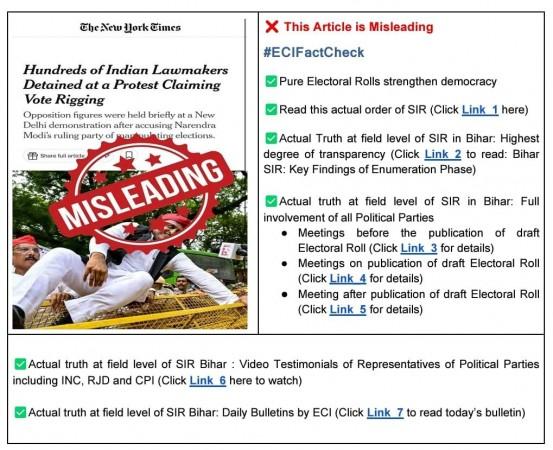
The Election Commission of India (ECI) on Tuesday dismissed as "misleading" a report in The New York Times highlighting Opposition leaders' allegation of voter list manipulation.
Sharing details of meetings held with political parties before the publication of the draft electoral roll in Bihar, at the time of publication of the draft roll and after the publication of the draft roll, the ECI claimed that it maintained the highest degree of transparency in the exercise.
Claiming that pure electoral rolls strengthen democracy, the ECI reissued the actual order of Special Intensive Revision (SIR) in Bihar.
The ECI's fact-check was issued on the day after the Leader of Opposition in Lok Sabha, Rahul Gandhi, led a united protest march of the INDIA Bloc parties from Parliament to the ECI's office at Nirvachan Sadan in Delhi.
The ECI also circulated its daily bulletin on the SIR, which showed that even after 12 days of the publication of electoral draft rolls, none of the political parties has filed any complaint.

The daily bulletin on SIR in Bihar said the office of the Bihar Chief Electoral Office (CEO) and its team of Electoral Registration Officer (EROs) have disposed of 341 claims and objections received directly from electors for inclusion of names in the draft voter list and exclusion of ineligible voters.
The election office has so far received 13,970 claims and objections from electors concerning Special Intensive Revision (SIR) of electoral rolls in Bihar, said an ECI bulletin.
It said as per the rules, the claims and objections are disposed of by the ERO/AERO concerned after the expiry of 7 days after the verification of eligibility documents.
The ECI said that in Bihar, since August 1, as many as 63,591 new electors, who have turned 18 after the SIR exercise, have filed forms for inclusion in the voter list.
(With inputs from IANS)








